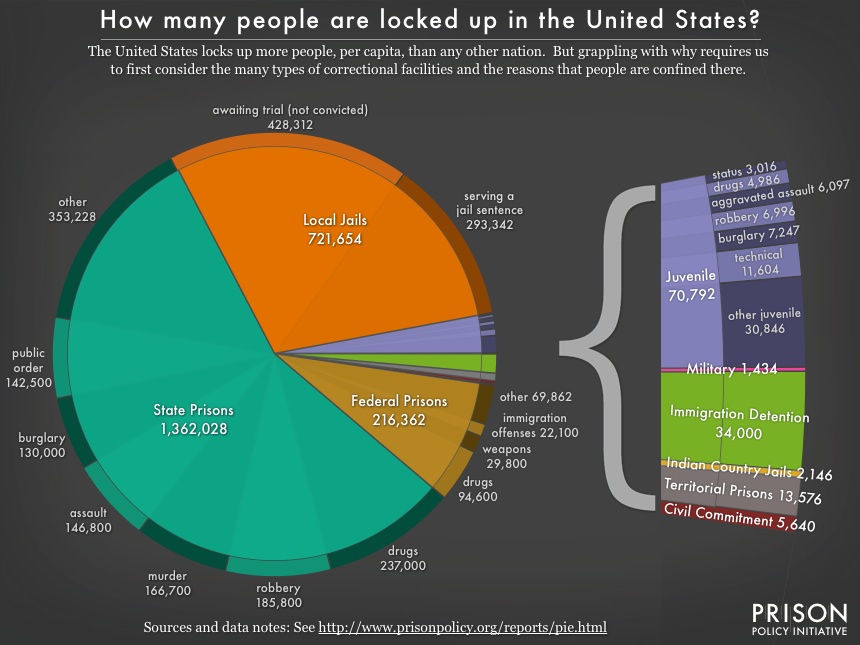 † Criminal InJustice is a weekly series devoted to taking action against inequities in the U.S. criminal justice system. Nancy A. Heitzeg, Professor of Sociology and Race/Ethnicity, is the Editor of CI. Kay Whitlock, co-author of Queer (In)Justice, is contributing editor of CI. Criminal Injustice is published every Wednesday at 6 pm.
† Criminal InJustice is a weekly series devoted to taking action against inequities in the U.S. criminal justice system. Nancy A. Heitzeg, Professor of Sociology and Race/Ethnicity, is the Editor of CI. Kay Whitlock, co-author of Queer (In)Justice, is contributing editor of CI. Criminal Injustice is published every Wednesday at 6 pm.
The Prison Industrial Complex, By the Slice
Editor’s note by nancy a heitzeg
From time to time, when the morass of numbers becomes too great, we need a picture that is worth More than 1000 Words . Prison Policy Initiative offers us just that with Mass Incarceration: The Whole Pie A Prison Policy Initiative briefing By Peter Wagner and Leah Sakala March 12, 2014. The graphic below offers some clarity at a time when there are claims of decreasing incarceration rates, and additional confusion and debate about the size and location of the U.S population on lock down

(click image for a larger view)
From the policy briefing:
There is a lot of interesting and valuable research out there, but definitional issues and incompatibilities make it hard to get the big picture for both people new to criminal justice and for experienced policy wonks. On the other hand, piecing together the available information offers some clarity. This briefing presents the first graphic we’re aware of that aggregates the disparate systems of confinement in this country, which hold more than 2.4 million people in 1,719 state prisons, 102 federal prisons, 2,259 juvenile correctional facilities, 3,283 local jails, and 79 Indian Country jails as well as in military prisons, immigration detention facilities, civil commitment centers, and prisons in the U.S. territories….
Now that we can, for the first time, see the big picture of how many people are locked up in the United States in the various types of facilities, we can see that something needs to change. Looking at the big picture requires us to ask if it really makes sense to lock up 2.4 million people on any given day, giving us the dubious distinction of having the highest incarceration rate in the world. Both policy makers and the public have the responsibility to carefully consider each individual slice in turn to ask whether legitimate social goals are served by putting each category behind bars, and whether any benefit really outweighs the social and fiscal costs. We’re optimistic that this whole-pie approach can give Americans, who seem increasingly ready for a fresh look at the criminal justice system, some of the tools they need to demand meaningful changes to how we do justice.
(117)



